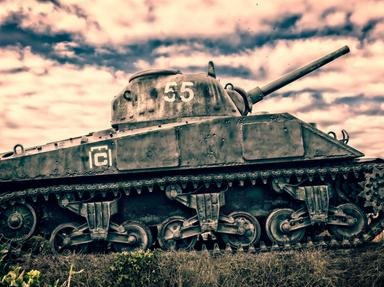Quiz Answer Key and Fun Facts
1. What was the caliber of most tank guns at the start of the war?
2. Why were the German panzers so effective at the start of WWII?
3. Which tanks where the first that really outclassed the PzKv III and Pzkv IVs?
4. What was so formidable about the Sherman Firefly ?
5. What were the main British anti-armor development in steps/size.
6. What made the Achilles special?
7. What were the Churchill tanks known for?
8. When was the Centurion developed ?
9. Why did the T-34 Tank have such an impact on WWII ?
10. What features was it that made Tiger 1s so fearsome ?
Source: Author
Majorduck
This quiz was reviewed by FunTrivia editor
bloomsby before going online.
Any errors found in FunTrivia content are routinely corrected through our feedback system.


